Laptop Displays
Introduction
This page provides details on the various laptop display technologies used with DOS laptop, portable and luggable computers. It should be read in conjunction with the Graphics Cards page as well as my CRT Monitors page for completeness.
These days we take it for granted that our modern laptops have colour high-resolution screens. Back when manufacturers were trying to make the IBM PC or compatible more transportable and lightweight, installing a Cathode Ray Tube (CRT) miniature monitor into a case made it preventatively heavy. CRTs were relatively cheap despite their weight, so it was an obvious choice to use tiny CRTs in their luggable machines. The first portable PCs - the Compaq Portable range - also used a CRT and IBM themselves used one in their first potable, the IBM Portable.
After only a handful of these heavyweights, the PC market turned to Liquid Crystal Display (LCD) technology, and whilst it was hugely expensive to make large LCD screens, as popularity of mobile computing grew prices fell, and so the use of LCDs more or less stuck throughout the DOS era in one guise or another.
Liquid Crystal Display (LCD)
LCD technology was another that first arose in the 1960s. It was tremendously energy-efficient, and required very little space so it suited mobile devices well. Since LCDs don't produce any light themselves (unlike gas plasma), they really needed what was to be called a backlight (literally, a light shining from the back of the screen) to really make the screen more readable. Backlit LCD displays really didn't start to appear until 1988 - before then your laptop computer's LCD display was like a large calculator screen using nothing more than a reflective layer behind the liquid crystals to reflect ambient light! There was also the concept of 'sidelit' displays where rather than shining a light from behind the screen, the display would have a light on each side.
Unfortunately, even with a backlight, LCD displays have poor contrast and a slow refresh rate, which would produce a "ghosting" effect whenever the displayed content was scrolling or moving.
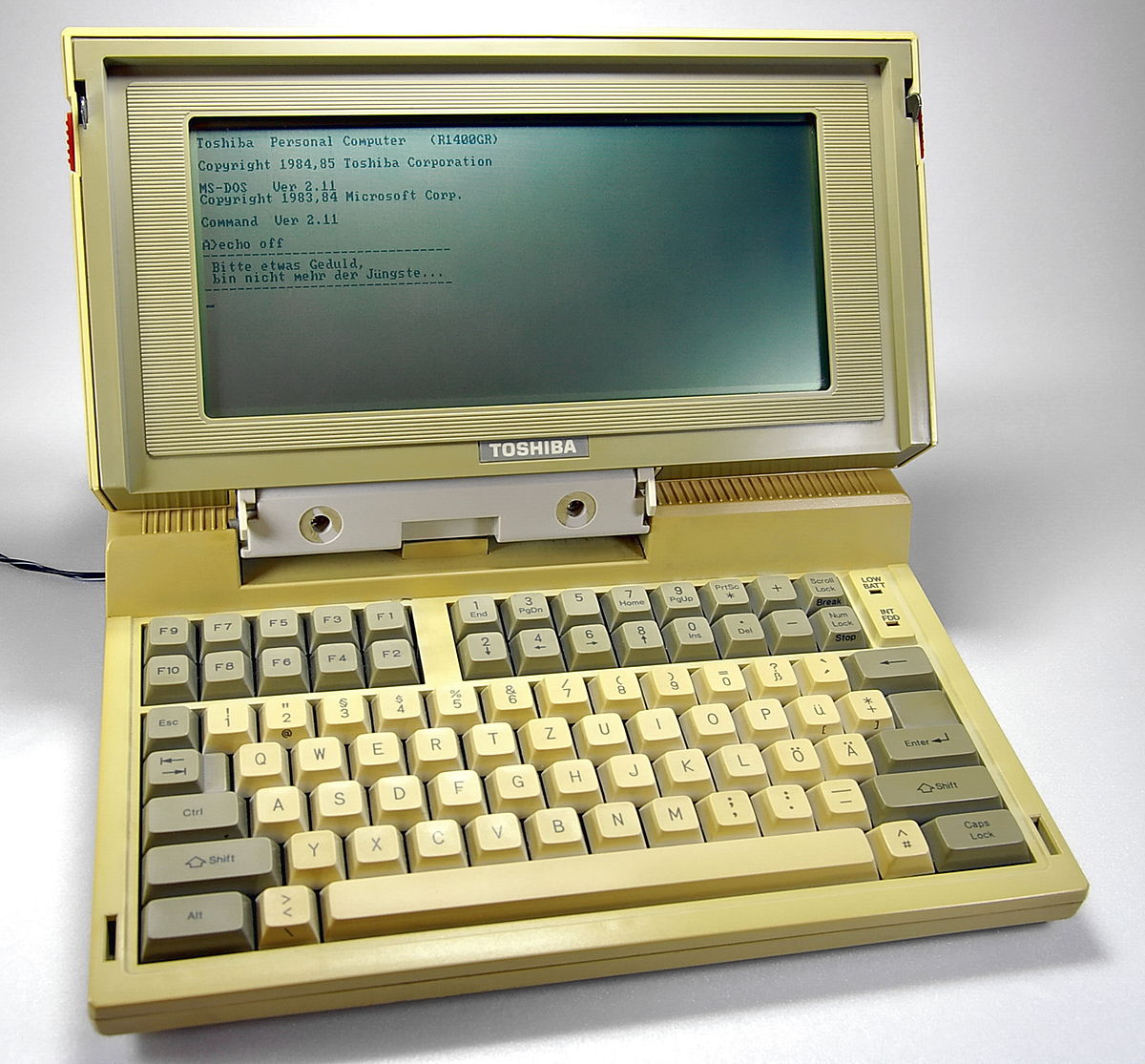
The Toshiba T1100 with its monochrome LCD display (1985)
Gas Plasma
Gas plasma displays were first used in the 1960s. In a gas plasma display, each pixel is illuminated by a tiny bit of plasma (charged gas). Gas plasma displays are thinner than CRTs due to there being no need for an electron gun at a certain distance from the back of the screen, and are much brighter than LCD displays. The gases used in a gas plasma display are neon and xenon, both inert, and these are sandwiched in between two plates that have been coated in a conductive print - one of which contains vertical lines, and the other, horizontal lines. So together they form a grid. When electric current is passed through the conductive prints on these two plates the gas at the point they meet glows, which is seen by the user as a single pixel lighting up. Despite being particularly bright and produce a nice sharp image, gas plasma displays use a lot of power, making them pretty unsuitable for portable computing, but it made a comeback with flat-panel TVs many years later!
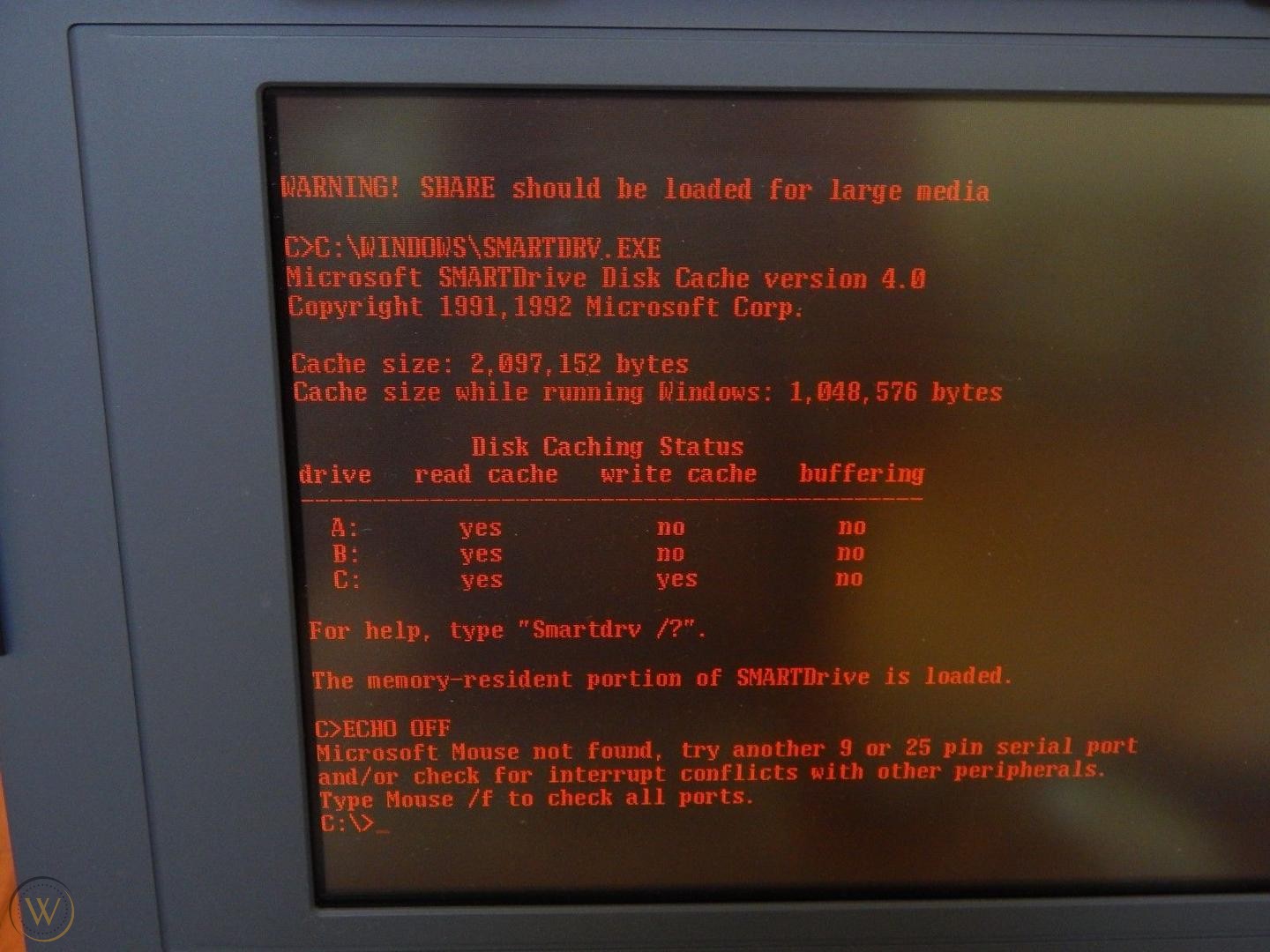
The orange gas plasma display from a Toshiba T3200SX (1989)
Supertwist Nematic (STN) Display
Invented in 1983, the STN is a type of monochrome passive-matrix LCD display. The "passive" in the wording here means that each pixel must maintain its state (off or on) without active driving circuitry until it can be refreshed again. In a Twisted Nematic (TN) display the liquid crystal molecules have an electric field applied to them to realign the molecules to either be off (twisted 90 degrees, electric field off), or on (untwisted, electric field on). Sadly due to limitations/thresholds of passive-matrix addressing, TN displays could only be so large. In a supertwist nematic display, the molecules are twisted 180 to 270 degrees which allowed for more rows and columns, hence higher resolution displays.
All STN displays were monochrome until NEC launched the first colour laptop, the ProSpeed CSX, in October 1989. Several other laptop manufacturers had been working on colour screen technology at the same time, so 1990 saw many more colour laptops arrive on the market.
One advantage of STN displays is that they require no backlight - they are still readable under direct sunlight with a reflective layer behind the display. Unfortunately, because they are still passive matrix, the ghosting effect seen with LCD monochrome displays is still present.
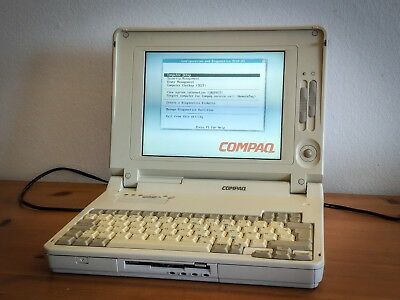
The Compaq LTE Elite 4/40C
with a colour STN display
Double Layer Supertwist Nematic (DSTN) Display
To overcome the slow refresh rate of STN screens, DSTN technology splits the screen into two halves, where each half is simultaneously refreshed, giving a much faster overall refresh rate.
Sadly, DSTN still suffers from the same inherent problems of any passive-matrix display, like low contrast (typically a DSTN display has a contrast ratio of 15:1 compared to TFT displays which are 40:1 or better), and washed-out colours.
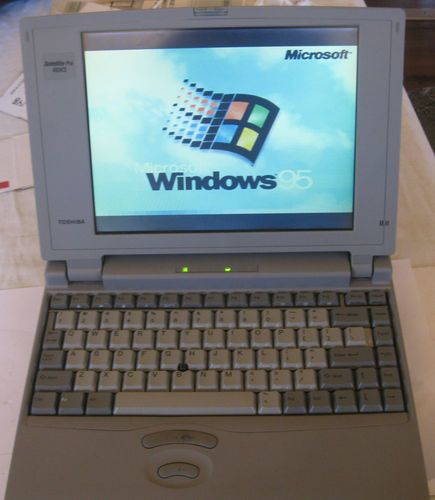
The Toshiba Satellite Pro 400CDS with its colour DSTN display
Thin Film Transistor (TFT) Display
TFT, also called "active-matrix" displays arrived around mid-1992, and were available in both monochrome and colour, though most laptop manufacturers had stopped selling monochrome TFT laptops by 1994 as prices of the colour displays dropped.
TFT displays work on the basis of each individual pixel being switched on or off by up to four transistors. The "active" in the name is because each pixel also has a capacitor that actively maintains the pixel state. Whilst much more expensive than STN/DSTN displays, they overcome all the problems of a passive-matrix display. They have a much higher contrast ratio and a fast refresh rate.
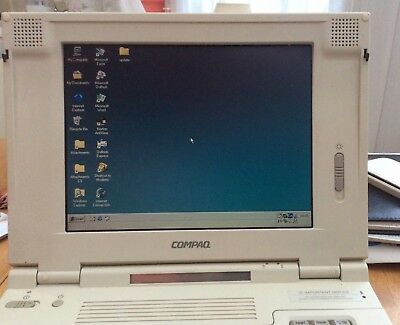
A Compaq LTE 5200 from 1996 with its colour TFT display
The early TFT displays had a maximum display resolution of 640 x 480 - if you wanted to run Windows in a higher resolution you could do so by attaching an external monitor to the laptop. By 1996 the SVGA resolution of 800 x 600 was becoming more commonplace for TFT laptops, and top-end ones even supported 1,024 x 768.
TFT technology is still widely used on modern-day laptops.